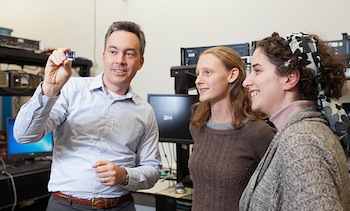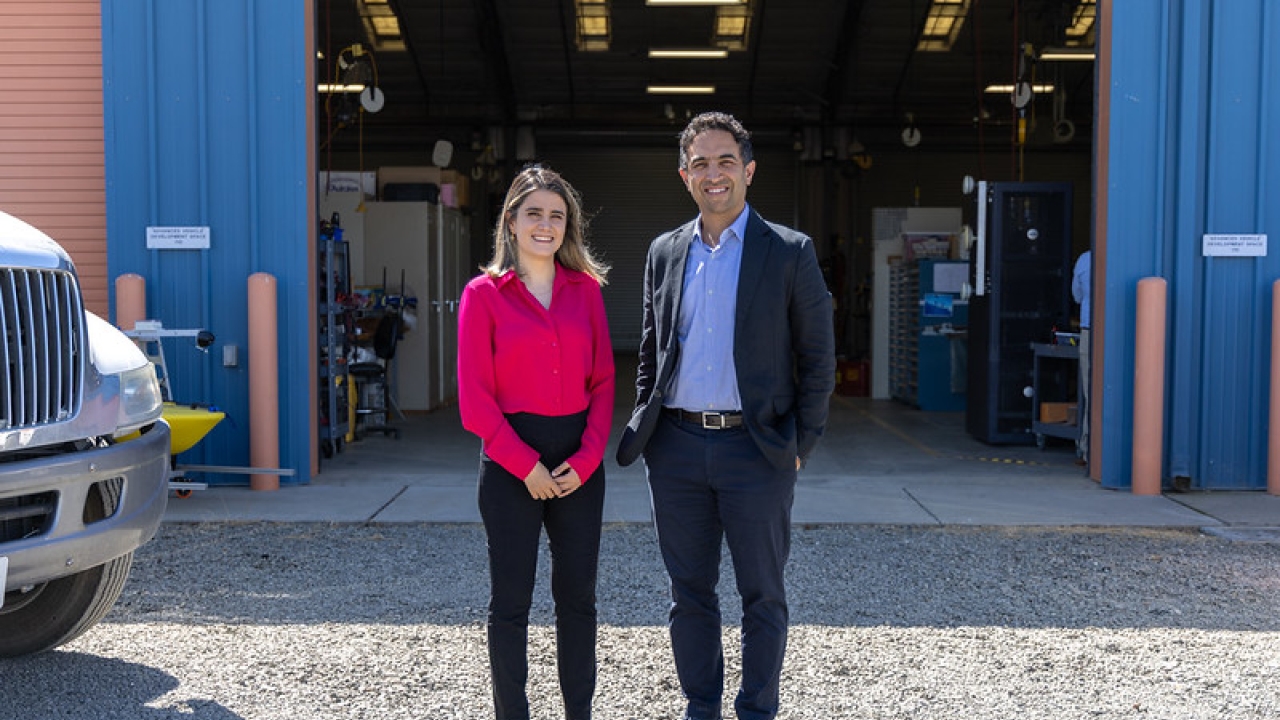David Horsley Collaborates on Innovative Motion-Sensing Technology
People already intimidated by the tiny keyboards on smart phones and other hand-held devices are certain to cringe at the impending arrival of smart watches. How will multiple controls be accessible on a gadget face the size of a quarter?
 David Horsley, a professor and vice chair for graduate studies in the UC Davis Department of Mechanical and Aerospace Engineering, is part of a ground-breaking solution.
David Horsley, a professor and vice chair for graduate studies in the UC Davis Department of Mechanical and Aerospace Engineering, is part of a ground-breaking solution.
Horsley is heading the UC Davis segment of a collaborative effort that also involves Bernhard Boser, a professor in the UC Berkeley Department of Electrical Engineering and Computer Sciences. Their breakthrough technology grew out of a project sponsored by the U.S. Defense Advanced Research Projects Agency (DARPA), and the result is destined to change the way we interact with all sorts of personal devices.
Physical contact — such as brushing an iPad screen — no longer will be necessary. Horsley and Boser have developed tiny chips that employ ultrasound waves to detect three-dimensional gestures. In other words, waving your hand above a smart watch face, left to right, would trigger a particular function, thanks to what they’ve dubbed an . Waving right to left, or front to back, would activate different functions.
Horsley and his group — postdoc Andre Guedes and PhD student Stefon Shelton — developed the piezoelectric micromachined ultrasonic transducers (PMUTs), which are combined with the custom integrated circuit (IC) developed by Bernhard and PhD student Richie Przybyla. The two chips, placed adjacent to each other, are about half the width of a Lincoln penny. The fully collaborative effort emanates from the Berkeley Sensor and Actuator Center, which Horsley and Bernhard co-direct; Guedes, Shelton and Przybyla work side-by-side in the same lab.
The potential applications are huge, as demonstrated by a YouTube video produced by UC Berkeley. No surprise, then, that the technology — known as Chirp — is destined to become the centerpiece of a startup, Chirp Microsystems, that will produce and sell the chips to hardware manufacturers.
“The sensor is really small, and really low-power,” Horsley explains, in the video. “It takes only 400 microwatts to do 3D range-finding. That’s low enough to run the system for 30 hours on a battery so small that you might not be able to see it.”
Horsley earned his doctorate in mechanical engineering at UC Berkeley in 1998. He then entered industry, with stints at Dicon Fiberoptics and Hewlett Packard Laboratories, and was involved in founding Onix Microsystems and Picosense LLC. He joined UC Davis in 2003, and won the College of Engineering’s Outstanding Junior Faculty Award in 2009, the same year he received a National Science Foundation CAREER Award.




